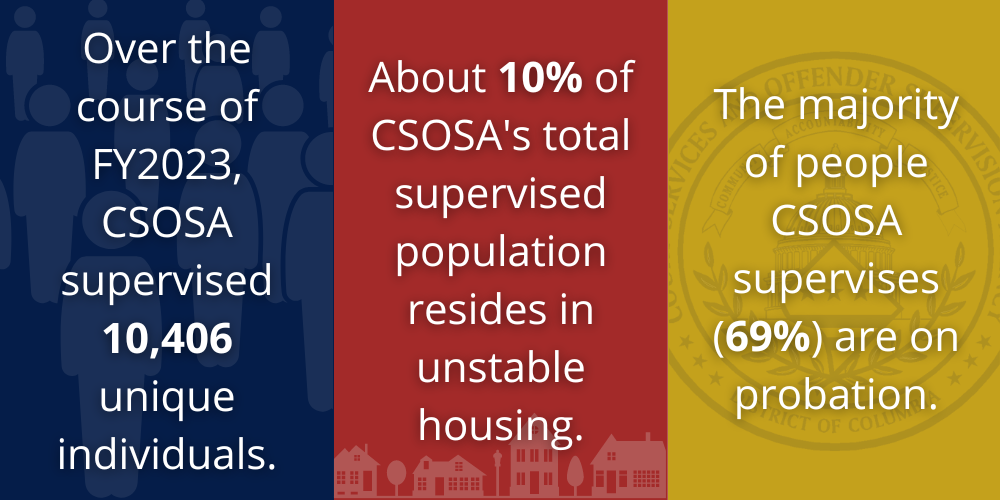
WHAT WE DO | Supervised Population
CSOSA supervises adults in the District of Columbia sentenced to terms of probation, parole, or supervised release. Read below for statistics about our supervised population, including their demographic, supervision, and stabilization needs.

Over the course of fiscal year 2023, CSOSA supervised 10,406 unique individuals in the District of Columbia. On any given day during FY 2023, CSOSA supervised an average of 6,536 people. On September 30, 2023, there were 6,431 individuals under CSOSA supervision.
Most people under CSOSA supervision (69%) are on probation – a court-ordered disposition where the person is placed under the agency’s supervision and remains in the community. The next largest group (19%) is on supervised release – a term of community supervision imposed by the court during sentencing and served after the person is released from prison. Almost seven percent of CSOSA’s supervised population is on parole – a now-abolished form of early release where an individual leaves prison for community-based supervision during a time when they might otherwise remain incarcerated.
Nearly 10 percent of CSOSA’s supervised population reside in unstable housing. CSOSA considers supervisees to have “unstable housing” if they reside in a homeless shelter, halfway house through a public law placement, transitional housing, hotel, or motel, or have no fixed address. Because our definition is less comprehensive than the US Department of Housing and Urban Development’s definition, we may underestimate the true need. It is challenging to accurately capture those with more tenuous housing circumstances, such as those staying with a relative or friend. Individuals who were revoked to incarceration were more than twice as likely to have unstable housing compared to the overall supervised population.
Click on the image above to see a snapshot of our FY 2023 numbers in our Supervision Data Infographic. For a more detailed look at our FY 2023 data, please visit our Reports page. Learn more about how we supervise this population on our Strategic Goals page.

